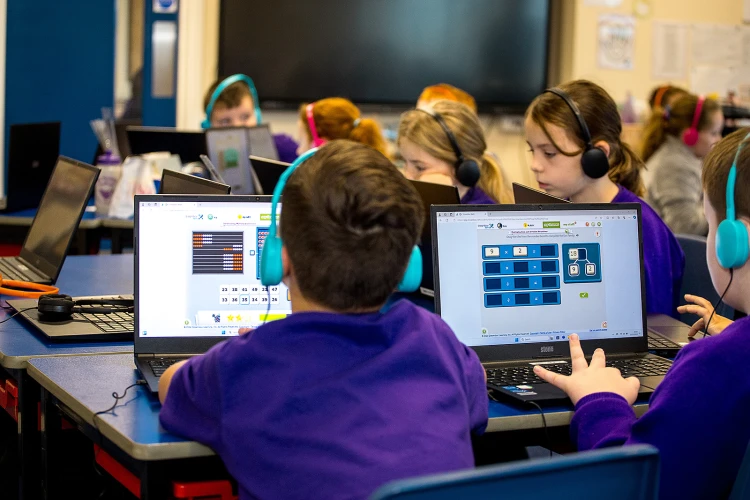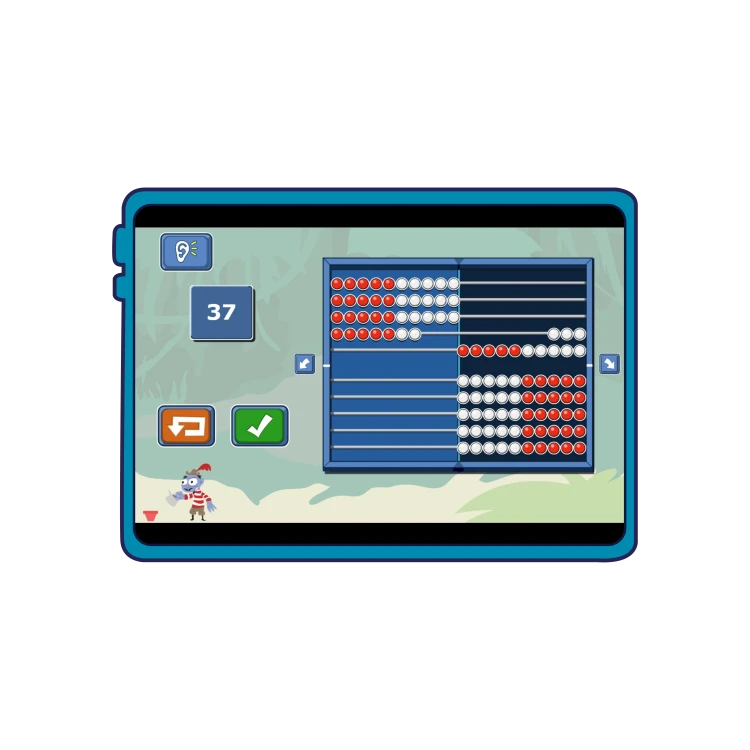St Helens pupils make great progress and close gaps with DreamBox Maths
Wargrave Church of England Primary School uses the hyper-adaptive online maths programme with their Year 4 classes, and has seen amazing outcomes regarding pupil progress and its impact on teaching.
Pupils are more engaged with DreamBox Maths, while teachers enjoy the comprehensive data and personalised learning that challenges all children.
Read the full case study to find out what Andrea Mason, Year 4 Class Teacher at Wargrave, has to say about the programme’s ability to uncover and close gaps all the way back to Year 1, improve problem-solving skills and effectively teach essential maths skills.
My favourite aspects of DreamBox Maths are the children's enthusiasm, the fact that it is so bespoke and that it doesn't just take children through levels - it teaches them what to do, which is different from just practising something.
Improved problem-solving skills and resilience
Schools have the opportunity to try DreamBox Maths for free before they decide whether to go forward with the programme, and the impact during our pilot was amazing.
- 46% were EXS when we did NFER tests in the spring.
- 73% were EXS when we did NFER tests in the summer, after using DreamBox Maths.
A lot of that has to do with the teaching, but there’s no doubt DreamBox Maths helped.
The programme also increases the children's willingness to think about a problem. Normally, if they see a problem and the answer doesn't jump out, they're not interested. However, because the programme encourages them to try different things, it builds their stamina and brain training.
It's so different to anything else that's out there. We've used other maths programmes, but they just take pupils through levels. My favourite aspects of DreamBox Maths are the children's enthusiasm, the fact that it is so bespoke and that it doesn’t just take children through levels - it is teaching them what to do, which is different to just practising something.

Comprehensive data to spot gaps - and fill them
The programme provides very detailed information, for example:
- The amount of time it is being used by each child and the number of lessons they have completed.
- The maths strands that each individual child has achieved, their level of progress and the gaps in their knowledge.
- Teachers are able to watch lessons that the children have completed, allowing for a deeper understanding of their misconceptions or struggles.
- A detailed gap analysis of all strands for all year groups, showing competence, in progress or not yet started.
Our data shows there's overall progress in the class. It's incredible to see children who have made rapid progress, and it also highlights children I need to support that you maybe wouldn't notice in a normal lesson.
We have to make teacher judgements, and the only thing we've really got to back that up is NFER papers. However, the DreamBox Maths data has helped us confirm that the children I think should be challenged and those that need support are the right ones.
It has been particularly useful to look back at learning objectives from previous years. We have identified gaps in some children from Years 1 and 2, which are clearly impacting their understanding in Year 4. The fact that you can pinpoint those gaps and instantly set an assignment to close them instead of having to dig out worksheets and organise interventions is incredibly helpful. We still do those things - DreamBox Maths doesn't replace them, it's just such a great tool to have working alongside.
To be able to spot gaps and fill them at the click of a button is just a game-changer. As a class teacher, I can honestly say that this has been one of the most useful online resources I have come across.
Expanding teachers’ reach to challenge all pupils
It's difficult to challenge children in the climate of our catchment area. Around half of my class have special needs, support plans or EHCPs. This often means that the children I'd love to spend time challenging don't get that from me due to capacity constraints, but now DreamBox Maths has the ability to challenge each student at the level they need.
One girl in particular was really struggling. She gets excited when she's learned something new and was thrilled because she'd learned a pattern where the numbers had gone up in fours - she was squealing.
The children cover all areas of the maths curriculum and use many different visual resources in their lessons (number lines, PV counters, etc).
Messages can be sent from the class teacher to the students and the children have a selection of comments or emojis to use in their replies, ensuring they are aware they are being monitored and are praised for their efforts.

Positive pupil response and engagement
The programme has probably been one of the easiest things to use. The children were straight on.
When my class comes in from dinner, they have 10 minutes to prepare, wind down and be ready to learn. Instead, when the lesson starts, it's chaos. They're queuing for the toilets, still getting drinks and generally distracted. But if I leave the laptops out to use DreamBox Maths, it's strange - nobody needs the toilet, nobody needs a drink, they all just want to use the programme. That speaks volumes.
Pupil feedback includes:
- “Can we have an assignment?”
- “I really like my assignment, I want another one.”
- “I didn't like maths, but I do now.”
Book a brief online introductory meeting with one of our Maths Development Consultants to explore the advantages of DreamBox Maths for your school.
Call:
0191 389 6078

